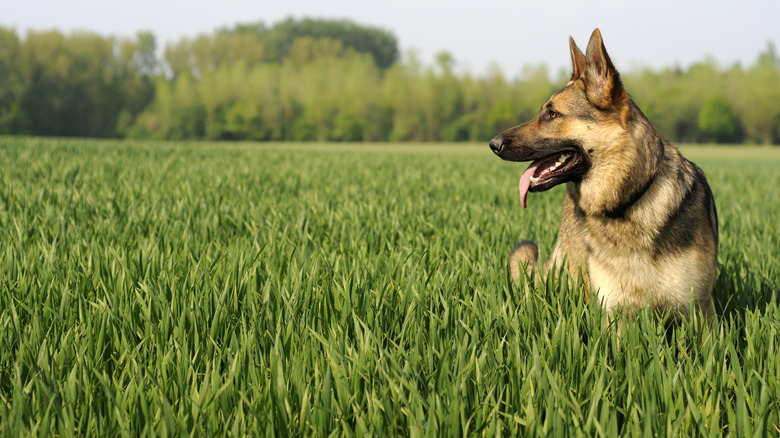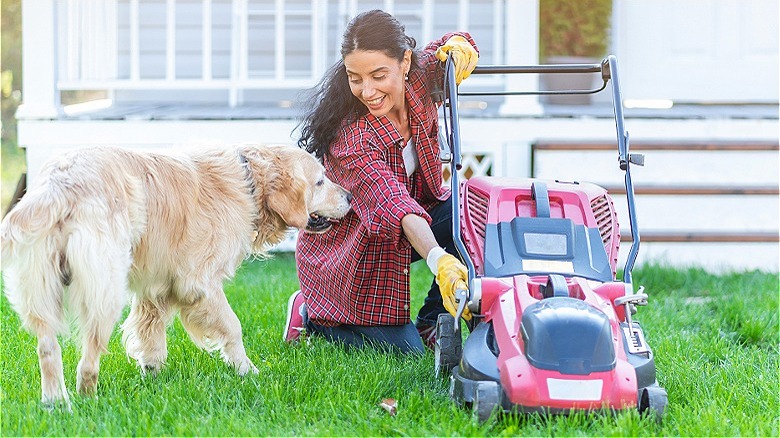Why Letting Your Grass Grow Out Might Be Good If You Have A Dog
As a dog owner, have you ever thought about how your pet impacts your lawn? Most times, people focus on creating a safe outdoor space for fun games of fetch and zoomies, but what about the grass itself? For dog owners, when it comes to lawn care, it's better to let the grass grow out a bit longer. The reason? Longer grass will be more resilient to the wear and tear caused by a dog's activity, and that means a healthier, greener lawn, even with a dog.
Grass that's allowed to grow a bit taller also builds a stronger and deeper root system. As a result, as your dog runs through it, lays on it, and even digs into the grass, the lawn has a better chance of withstanding the damage and recovering from it. Note that if you have a dog with tiny legs, it's much more difficult to put off cutting the grass frequently and keeping it lower, but these dogs are also less likely to cause significant compaction or uprooting to the grass blades.
How high to let your grass grow with a dog
When your goal is to keep your lawn looking good, you need to ensure it has a healthy foundation, proper fertilizer, and the right maintenance. Each species of grass has different requirements, and you'll want to do some research on what's best for your lawn. Then, follow a few tips.
Start with determining which species of grass you have and the ideal cutting length for it. For example, if you have St. Augustine grass, the ideal mowing length is about 3 inches. For those with Kentucky bluegrass, you'll be able to mow a bit higher at 3.5 to 4 inches in height. Some species do best with a lower cut, like most versions of Bermuda grass.
Once you have an idea of the ideal height for your grass, raise your lawnmower's deck to that height. Chances are good it's currently set at a lower level, and that means you can leave your grass a bit longer going forward. Alternatively, you can simply take a closer look at your grass and cut it when it reaches 3 to 4 inches in height.
It's also important to give the grass some extra support by removing dog waste right away, using more natural instead of chemical fertilizers, and keeping the weeds at bay. For your dog, keep the grass comfortable and flea-free for the best playtime possible. It's possible to have a dog and a beautiful lawn with some careful balance.

